Not Too Old to Learn and Not Too Young to Teach
By Sonam L.
Have you ever experienced teaching someone older than you? If not, I assure you that you are about to experience a most curious circumstance.
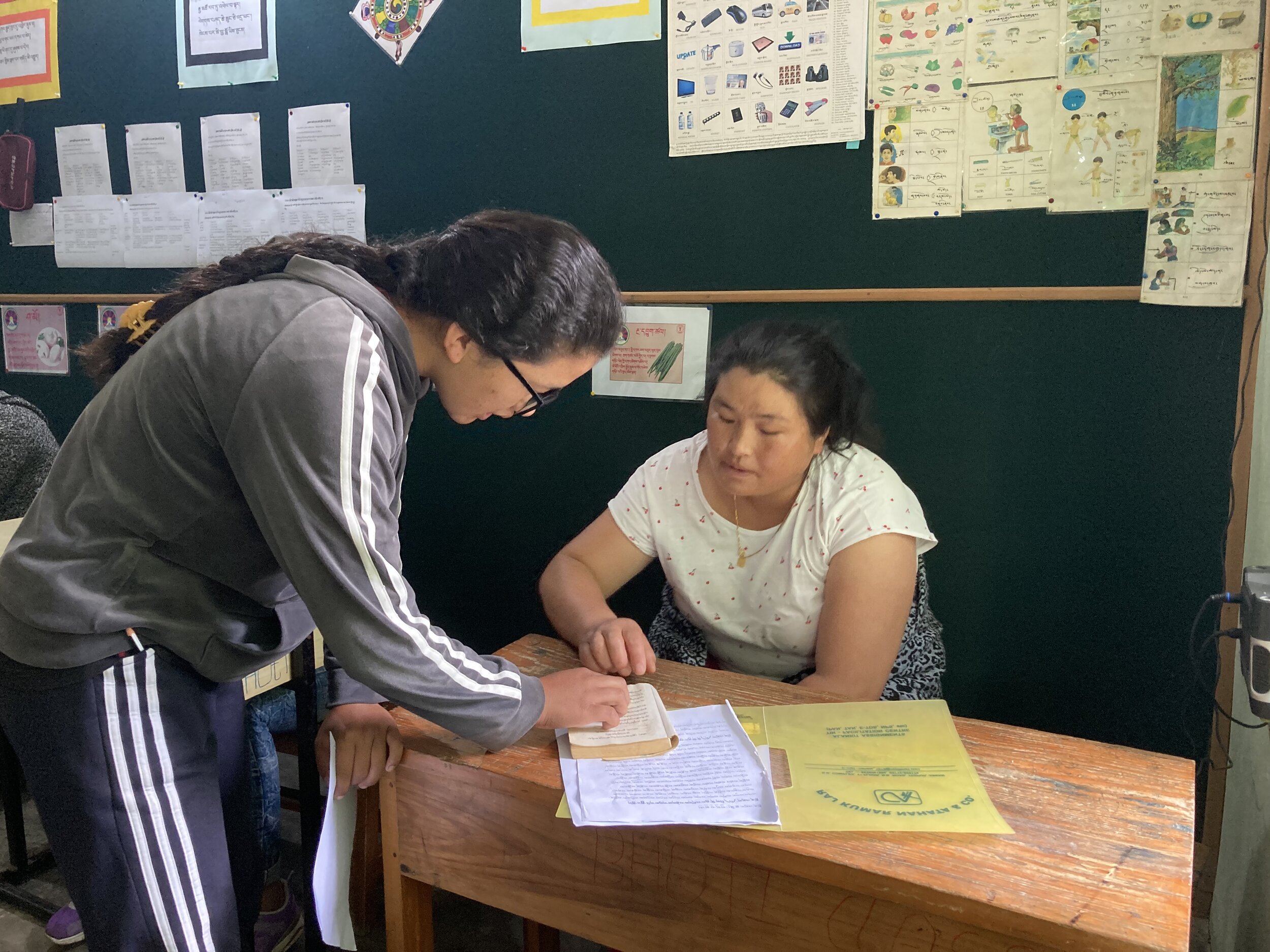
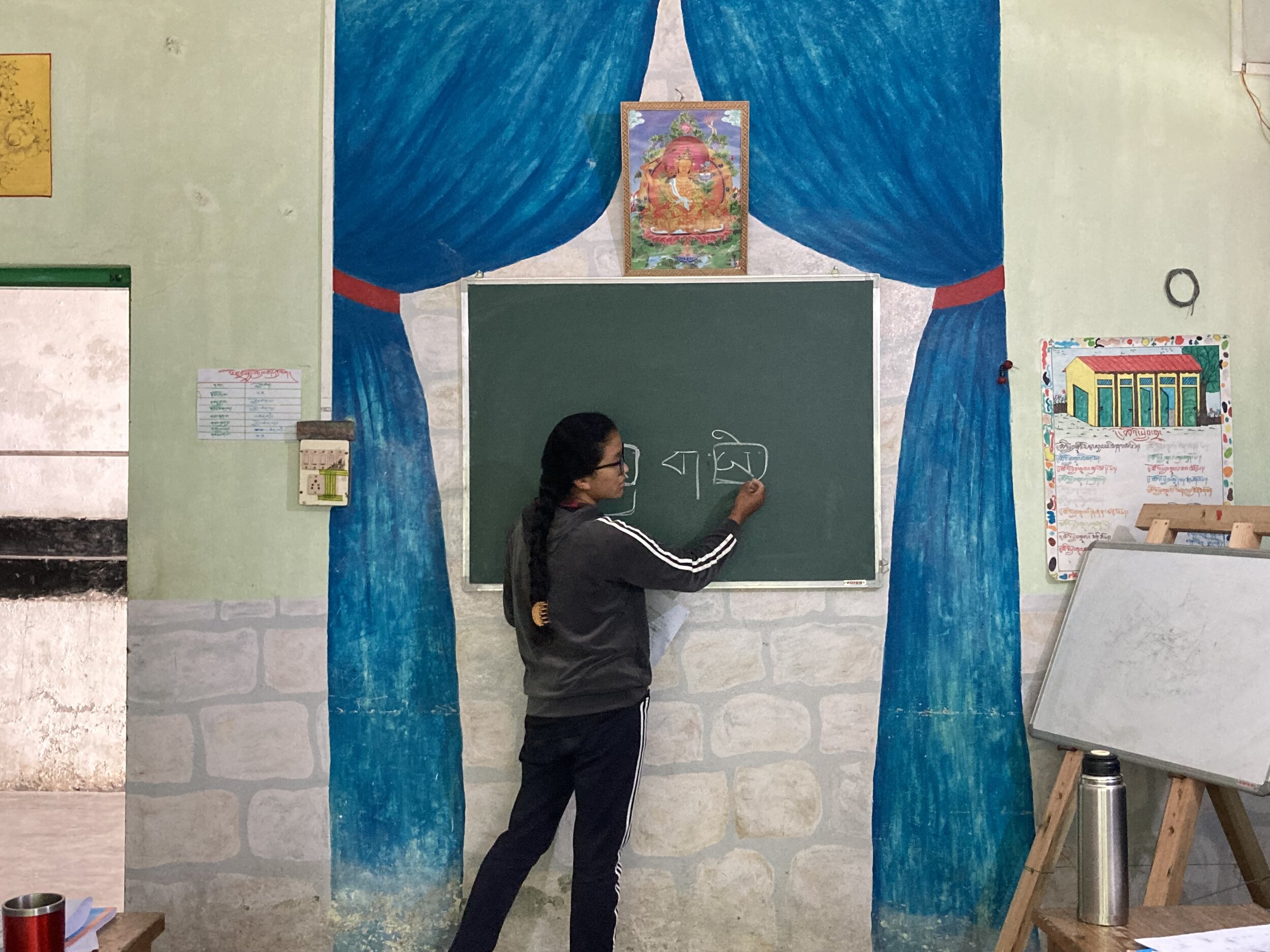
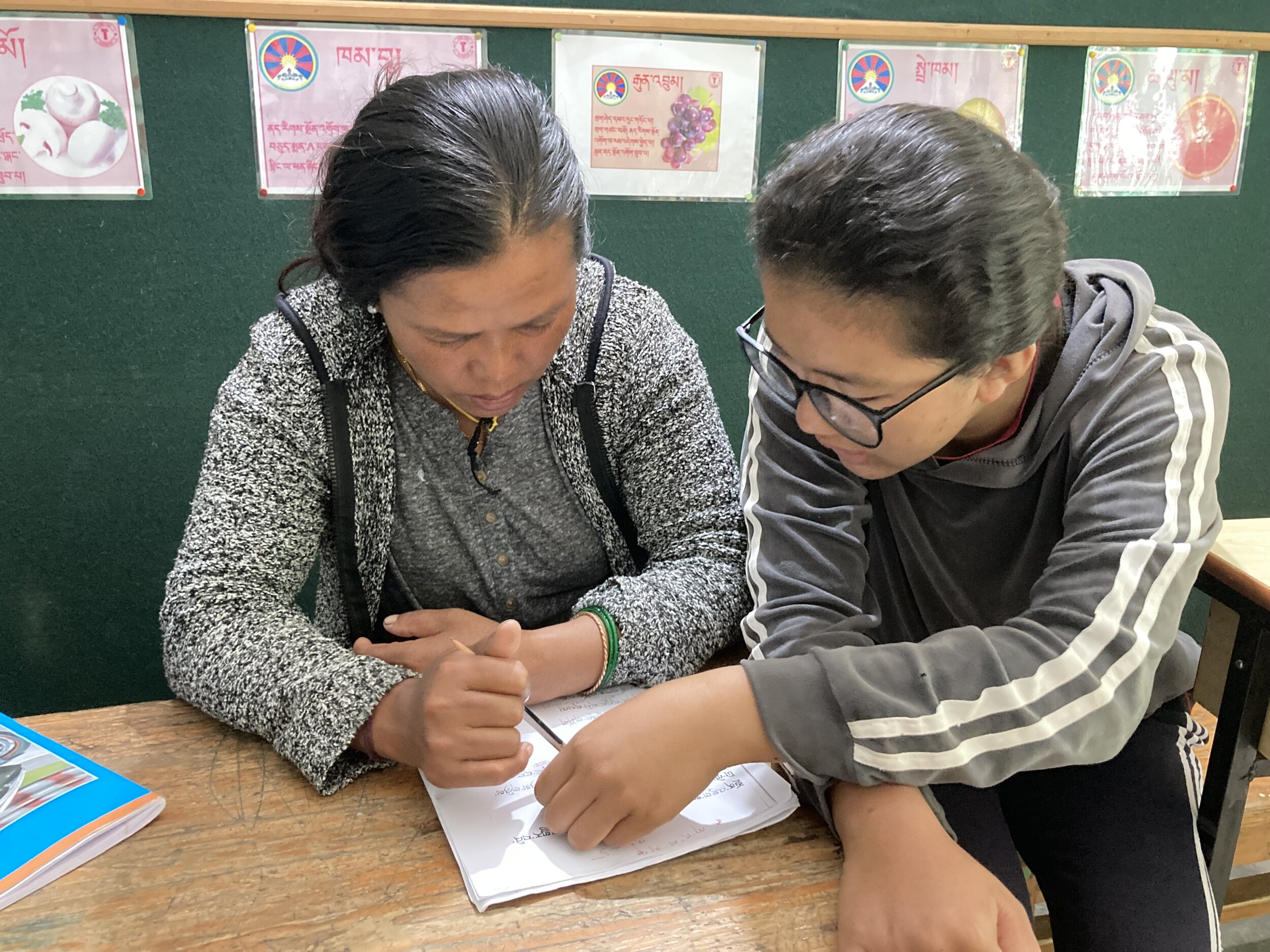
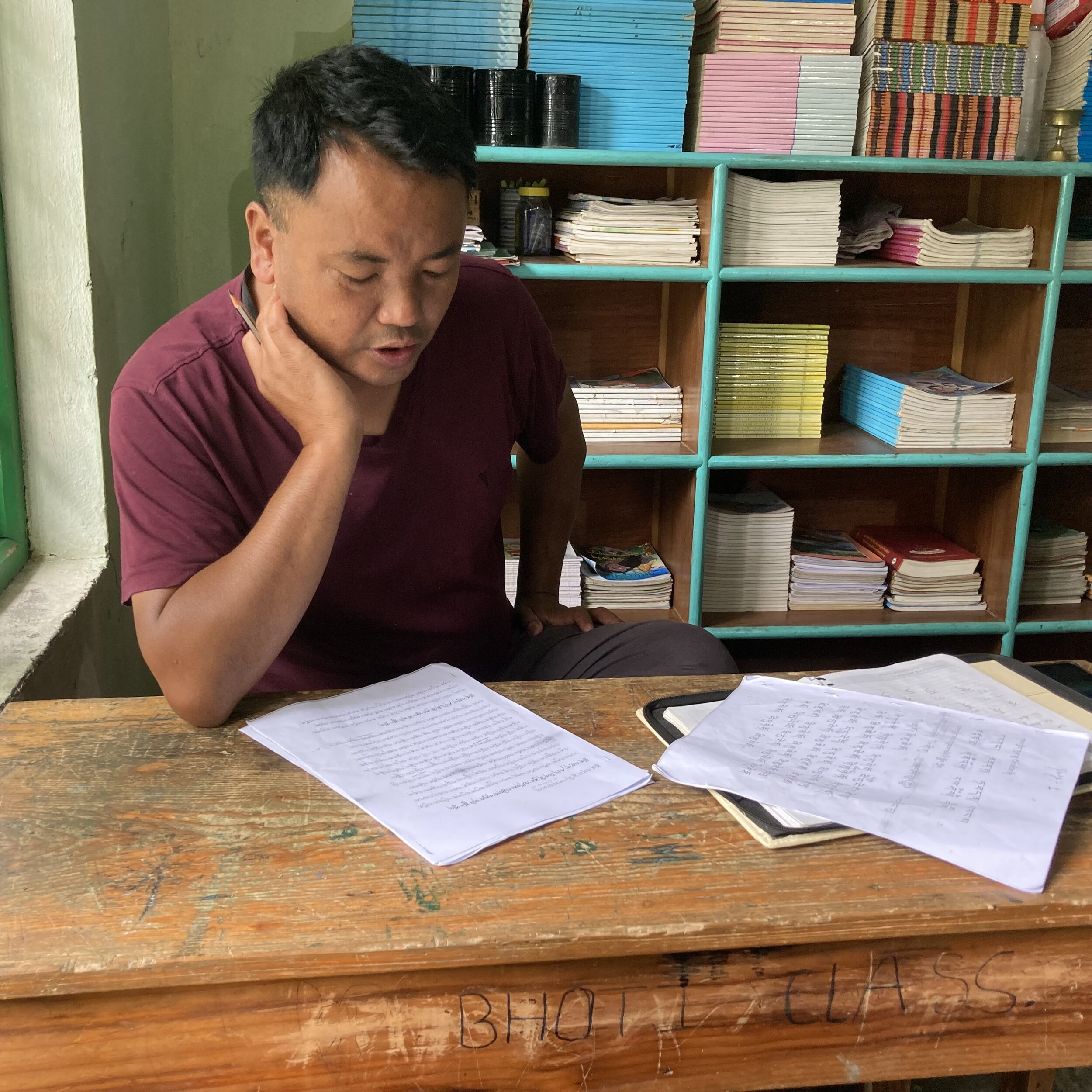
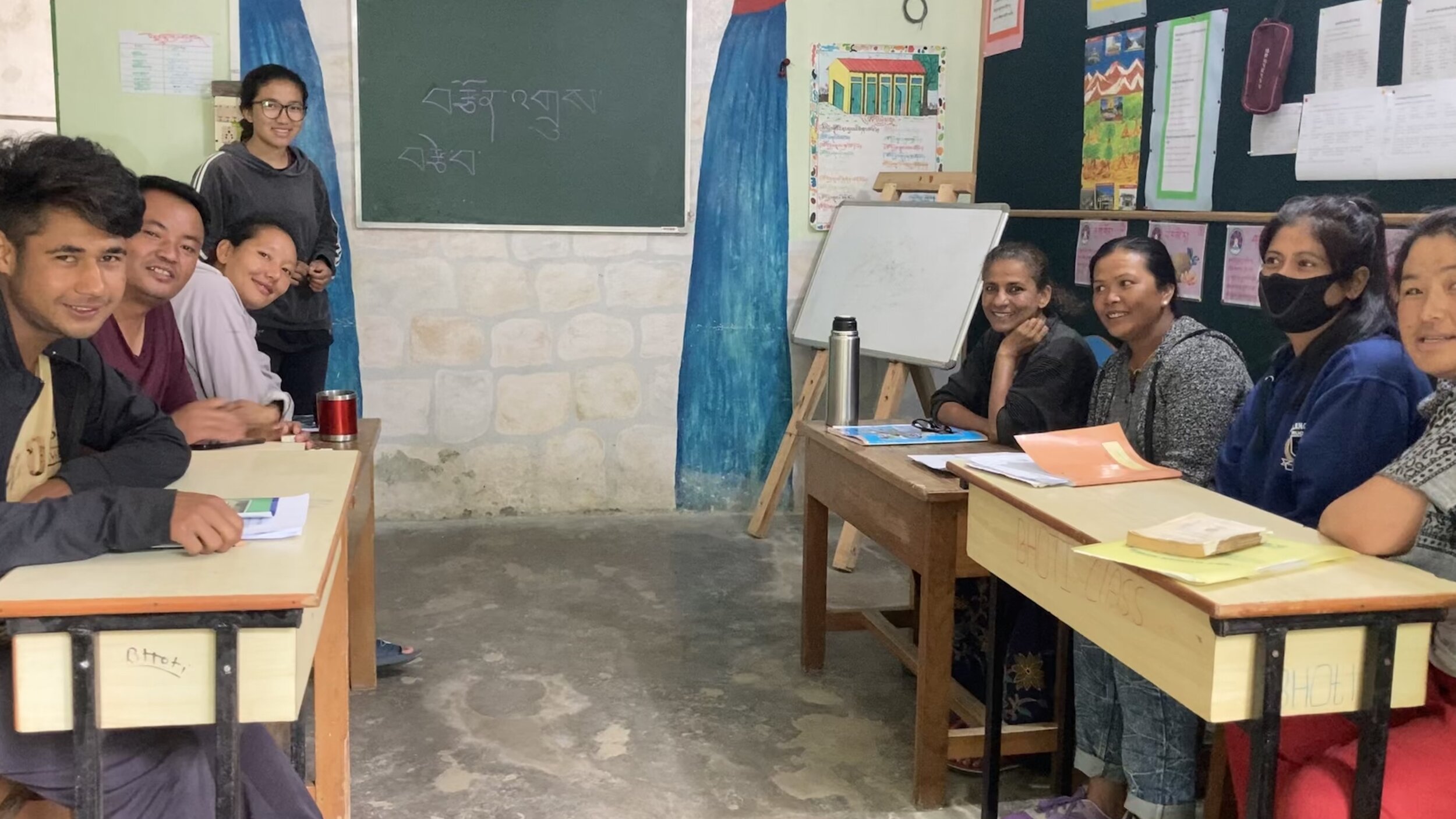
It is my experience of being a teacher to the adults of Jhamtse Gatsal Children’s Community. I was asked to help with spoken English to Ama Sonam, a community elder who manages our organic gardens, and two of our construction staff members, Achi (brother) Pasang and Gen* Lham Dorjee. Initially, I hesitated—not because I didn’t want to—but because I felt I wasn’t good enough to teach my elders.
In the first class I took, I started with self-introductions. Informally, everyone here says “Myself” followed by their name when they’re introducing themselves. I taught them to say “My name is” or “I am” and then follow it with their name.
As our classes progressed, I realized that everybody learns differently and that I had to teach accordingly. However, it wasn’t very difficult as I had very few adult students to teach. Among the things I enjoyed was coming up with activities to make my lessons interesting.
Once, I asked each of them to take us on a tour of their respective departments. Ama Sonam took us on a tour of her farm. The motive was to make them familiar with English. In the same activity, I asked Achi Pasang and Gen Lham Dorjee to pretend they were guests. They had to question Ama Sonam in English, even if they knew the answers to the questions.
Another thing I enjoyed was problem-solving through research. Whenever my students asked me questions to which I didn’t know the answers, I would either go back and ask some of my teachers or look for answers in one of the grammar books in the library. I had a lot of fun using ‘Wren and Martin,’ a classic grammar book in an Indian classroom, to help find the answers.
One beautiful thing I noticed in my students was that they asked a lot of questions. I observed in them a willingness to learn. I say this because I knew how hard it was for them to speak in English, but they tried hard to talk in English even outside the class despite their shortcomings. It didn’t matter to me even when it was a ‘Hi,’ or something said out of courtesy. It was their effort that I appreciated the most.
After four to five months of my English classes with them, there was a break. Due to the pandemic-induced lockdown, we were sent back to our villages. Though I tried to take online courses as requested by my students, it didn’t work well. As days passed by and I also got busy with my examinations, English classes came to a standstill.
But, my opportunities to teach did not. When I returned to the Community, our founder Lobsang Phuntsok had asked all the staff to learn Bhoti (Tibetan language).
One of the Bhoti teachers went home for a couple of weeks. I took over his classes. Unlike my English classes, which only had three students, now I had three times as many students. My class had a total of ten adults.
My students included:
Ma’am Padmini, a primary school teacher
Ama Maya, who helps in construction
Ama Sonam, who manages the farms and whom I had taught in my English classes
Ama Kukkoo, Gen Lham Dorjee’s wife
Ma’am Meena, an admin staff member
Sanjay, a student who now pursues carpentry
Ma’am Minoti, a primary school teacher
Achi Dorjee, who manages our construction work
Teke sir, an admin staff member
and a few more members who join whenever their work schedules allow for it.
Though the numbers seem a lot, the class is more fun with more people because everyone helps each other learn. For instance, Ma’am Padmini helps Ama Maya with her work. However, one major challenge I face is that I teach a class that has such varying levels, though most of them easily catch up. I struggle to teach everyone at the same pace because I know from experience now that everyone does not learn the same way. But the good thing is that everyone wants to learn.
“Sometimes, even in my sleep, I’m reciting the alphabet.” jokes Sir Teke. I know that Ama Sonam wakes up early in the morning and revises her work. I’ve seen the staff members reach out to the Tibetan members in the Community to ask them the meanings of what they’ve learned. I see my students studying in their rooms or reciting the prayers even when they walk around the Community. Even in class, they never sit idle. Every time they get a break, they keep revising more than what I teach them.
They ask me questions that I, as a Tibetan student, had never bothered to ask when I was learning the same things.
When I started studying Bhoti, we were taught a prayer that we recite to this day. I never really bothered to ask the meaning of the prayer, but I knew it by heart. When one of my students asked me the meaning of the prayer, I was caught unaware. I asked my teacher for the meaning and shared it with my students. I learned something too in the process of teaching. I think that’s the best part of teaching; you learn things in unexpected ways.
I remember myself sitting in one of the same benches I see my current students sitting in, memorizing each letter of the alphabet, carefully reading each word out loud in a sing-song tune, and I can’t help but smile. I smile in the memory of being on the other side. When I see my students, it reminds me of when I started out learning the language.
Well, this is the end of my story—the curious story of a student becoming a teacher. The message I leave my readers with is perhaps this: We must continually challenge ourselves. It helped me learn, and I hope it does for you too.
*Gen is a title of respect in Tibetan. It is pronounced with a soft g, like get.
